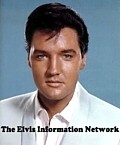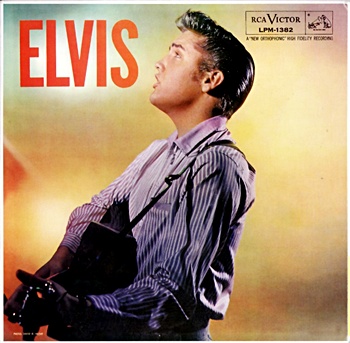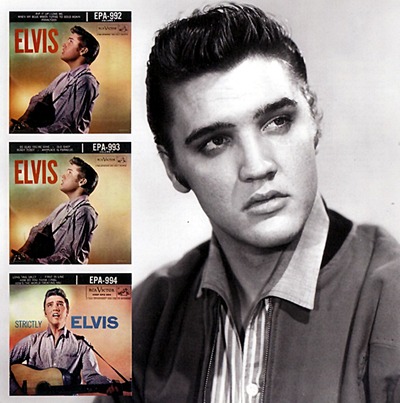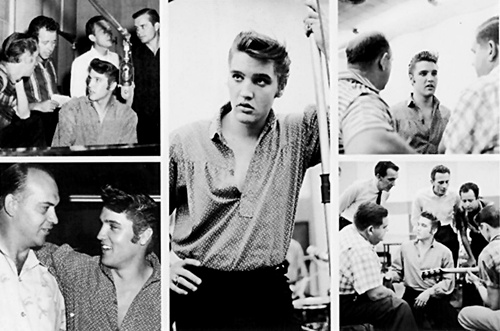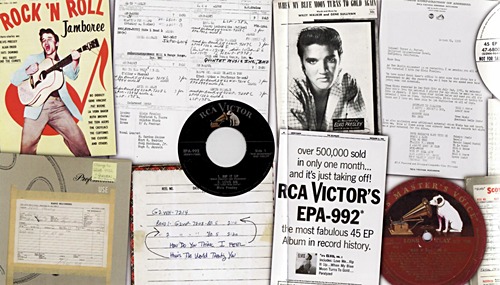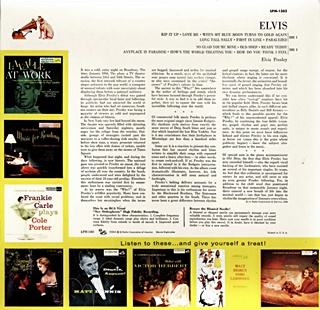 |
 |

Back in 2007 FTD released their Classic Album version of Elvis’ first LP. And what a stunner it was. Not only did we get some fascinating unreleased takes letting collectors delve even deeper into Elvis’ early RCA session but we also got a beautiful upgraded remaster of the audio from Kevan Budd. Now, seven years on, we finally get the Classic Album version of Elvis’ second album. There is no doubt that FTD had to produce this ‘ELVIS’ Classic Album version at some point - but it has to be a very different offering to their version of his first LP as unfortunately the session tapes for nearly every song is missing. No doubt lost during RCA’s unfathomable tape clear out of 1959. It makes you want to cry! Another difference is that nearly all these tracks have already been remastered by Vic Anesini and have previously been released elsewhere. Not only on the "Complete Masters" set but also on the wonderful RCA 1956 box-set ‘Young Man With The Big Beat’ released in 2011. And I can’t imagine that any FTD collector would not have bought ‘Young Man With The Big Beat’. When Elvis entered Radio Recorders in September 1956 he really was there to record "an album", his first genuine album of RCA material. After the all-time record-breaking smash of ‘Hound Dog/Don’t Be Cruel’ things could never be the same. This is not a Greatest-Hits kind of collection, instead it contains twelve tracks of extraordinary variety - it is one of my favourite early Elvis albums. So how many times have I already bought this fabulous album? The original vinyl (which got too worn), a replacement 33rpm vinyl, the 50's BMG box-set, Elvis '56, the 2005 Kevan Budd audio remaster, Young Man With The Big Beat and The Complete Masters at the very least. Surely that is enough!
Back in 2005 'Uncut Legends' magazine captured the importance and excitement of Elvis' second album in this lovely article which is worth repeating…
The informative "Behind the Scenes" also nicely explains the time-line and how this album release fitted into Elvis’ heavy workload....
There are four pages of memorablia plus some great recording session photos (see below) and interesting documents including one stating that Elvis might considering recording a selection the songs including ‘Naughty Mama’ and ‘I Ain’t Studying You, Baby.’
The Music. The audio has been mastered by Sebastian Jeansson (who worked with Vic Anesini on the Complete Masters) and it sound fabulous. Perhaps what matters more here is the audio improvement on the ‘Rip It Up’ outtakes. The CD starts with ELVIS the original album, followed by the single 'Playing For Keeps', 'Too Much' and also includes the three single sides from the ‘Hound Dog’ / Don’t Be Cruel’ session. It is not as if any of us need yet another version of the classic life-changing single but I still can never get enough of the lesser played singles ‘Too Much’ (listen for the laugh in Elvis’ voice straight after Scotty’s out-there guitar solo!) and the delicious ‘Anyway You Want Me’. The CD ends with the only surviving session tape featuring the ‘Rip It Up’ outtakes 10 –19. The majority of these have already been released across various BMG/FTD releases such as Flashback and ‘Today, Tomorrow and Forever’. Take 17 and Take 18 are the only unreleased takes on this double CD. To be honest, comparing the remastered sound to the Flashback versions they are definitely improved albeit not that dramatically. However now there is a lovely high-frequency edge on D.J. Fontana’s drums which notiecably sparkles here. The earlier takes also rock with Scotty Moore's guitar solo being so nice and rough! Elvis’ friends Natalie Wood and Nick Adams were present at the session and at the start of Take 15 Jordanaire Hugh Jarrett intones a marvellous "Natalie Wood" as a tease. Gordon Stoker played some stunning piano, by now the band were rockin’, and this could be a master save D.J. Fontana missing a beat or two. Before unreleased Take 18 you can hear Bill Black warming up but this time it is Elvis’ voice that wavered at 01.15 and the take fell apart when DJ Fontana and Scotty stopped before they get to the end. The next Take 19 would be the powerful master. Perhaps reacting to Elvis’ jibe, D.J Fontana, thrashes the hell out of his drums, Scotty Moore plays a blistering solo and Elvis’ voice which had previously strained through 27 takes of ‘First In Line’ holds out. ‘Old Shep’ alternate Take 5 follows. This was released by mistake on some US album pressings. If you listen to Take 1, the master, you can clearly hear Elvis’ piano chair, or Bill Black’s double-bass, squeak at 0:05 during the into. Elvis was playing the piano himself. I suspect that Thorne Nogar pressed for a cleaner recording although in the end Elvis’ heartfelt vocal was better on the first take. They kept trying for another 4 takes by which time Scotty Moore was adding some more prominent bluesy guitar picking to the mix. Take 5 is also at a slower tempo. The Jordanaires backing-vocals are spot-on in both takes so the band must have rehearsed well beforehand. As this Take 5 was officially released perhaps this bluesier version should have been in the ‘Complete Masters’ box-set but it was however omitted. When Elvis and the band wrapped up the session with ‘Rip It Up’ they had recorded an astounding Thirty-Nine studio masters in the one year. And remember that Elvis’ RCA contract only asked for "A minimum of 8 record sides a year"! - WOW!
FTD booklet double-page spread of memorabilia from the time
DISC 2 features the historic final appearance on the Louisiana Hayride.
Hirsch Coliseum, Louisiana Fairgrounds, Shreveport - December 15th 1956. Three songs from his new album were performed on the show. 'When My Blue Moon Turns To Gold Again', 'Long Tall Sally', and most importantly the stunning ‘Paralyzed’. Elvis’ final show of the year recorded for the Louisiana Hayride is an incredible, totally assured performance, to more than 9,000 screaming fans. ‘Don’t Be Cruel’ is also a perfect un-rushed version, the tempo slowed down and imitating the Billy Ward and the Dominoes version that Elvis would have heard in Vegas. Such a brilliant version and so different from the throwaway seventies attempts. Similarly ‘Love Me’ is beautifully performed and now with the Jordanaires as his permanent backing group. ‘I Was The One’ is also a very assured crowd pleaser getting the topical line for December "I’ll never know, I wish it would snow". "The song from the movie, in which I got blasted!" ‘Love Me Tender’ is a lovely early version and ‘When My Blue Moon' are more treats for this classic concert. Elvis of course ends the year with an all-mighty ‘Hound Dog’ as his faithful fans scream their lungs out in love and appreciation. It wouldn’t be until years later and The Beatles in 1963 that such mayhem would match this adoration for a recording artist.Incredibly Elvis’ next concert wouldn’t be until three months later on March 28th 1957. Sadly the concert only runs 31 minutes - and is the same version released on ‘Young Man With The Big Beat’(see full review here). Here I feel that FTD have somewhat let collectors down by not including something extra and new. The obvious possibility being the highlights from the TV shows that Elvis was performing within exactly the same time frame. The album was recorded September 1-3 1956, so why not include the added bonus of the Ed Sullivan September 9 performances with newly improved audio from Sebastian Jeansson / Vic Anesini? Of course I realise that the bottom of the barrel is being scraped but even a couple of newly remastered tracks would have made the second disc more interesting and collectable. Several fans have asked EIN exactly what makes this Classic Album worth buying all over again and they also wonder exactly how much FTD have left in their barrel. So of all my various copies of this fabulous album, this FTD Classic Album certainly is the best presentation so far (not on vinyl!). It looks wonderful and sounds fabulous - but is it wrong to say that I still feel that I was hoping for something more? (click here and send EIN your thoughts)
Overall Verdict: It is obvious that Elvis’ second album deserved a Classic Album treatment at some point and this is a very fine release for what it is. The presentation and booklet is as fine as ever. Sadly FTD putting the album out also makes the statement that they don’t ever expect to find those missing session tapes. Keen fans will surely be buying this to complete their collection (which is a fine reason) or perhaps only for the two previously unreleased ‘Rip It Up’ outtakes and the alternate take of ‘Old Shep’ (which seems a little crazy). As I noted, the bottom of the barrel is close and thinking of future FTD releases fans must be wondering - What now, What next, Where to – What’s left? EIN's spotlight looking at exactly what is left for future FTD releases is coming very soon.
Review by Piers Beagley.
BUY this Album at your local dealers or
EIN Website content © Copyright the Elvis Information Network.
Elvis Presley, Elvis and Graceland are trademarks of Elvis Presley Enterprises. The Elvis Information Network has been running since 1986 and is an EPE officially recognised Elvis fan club.
|
|
